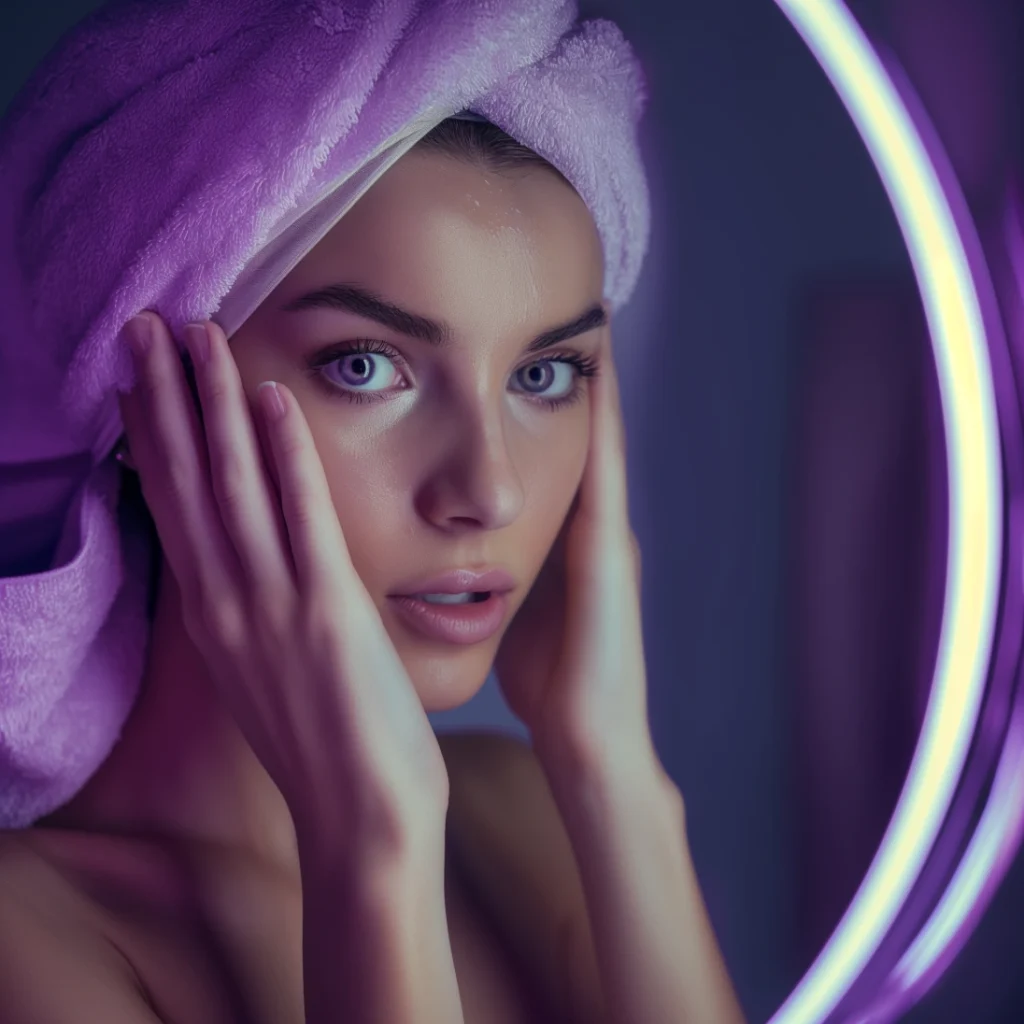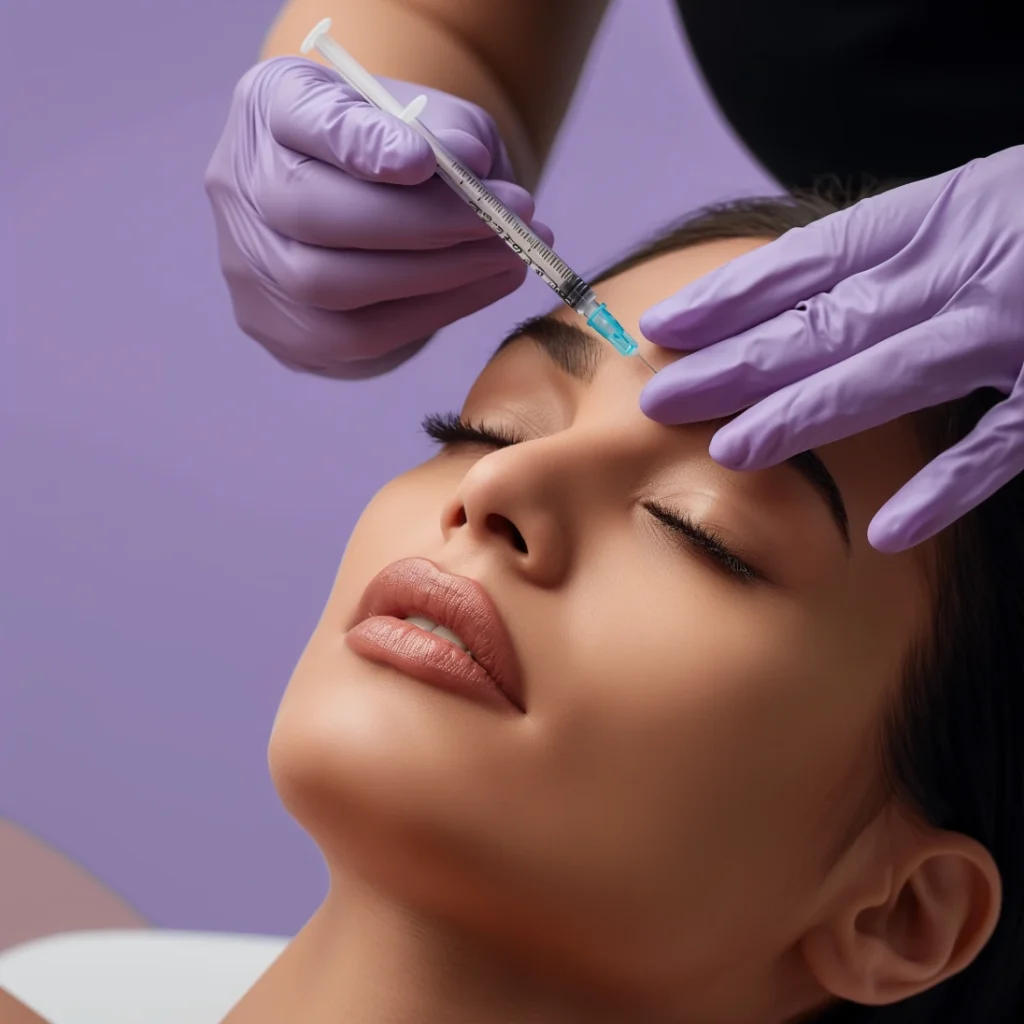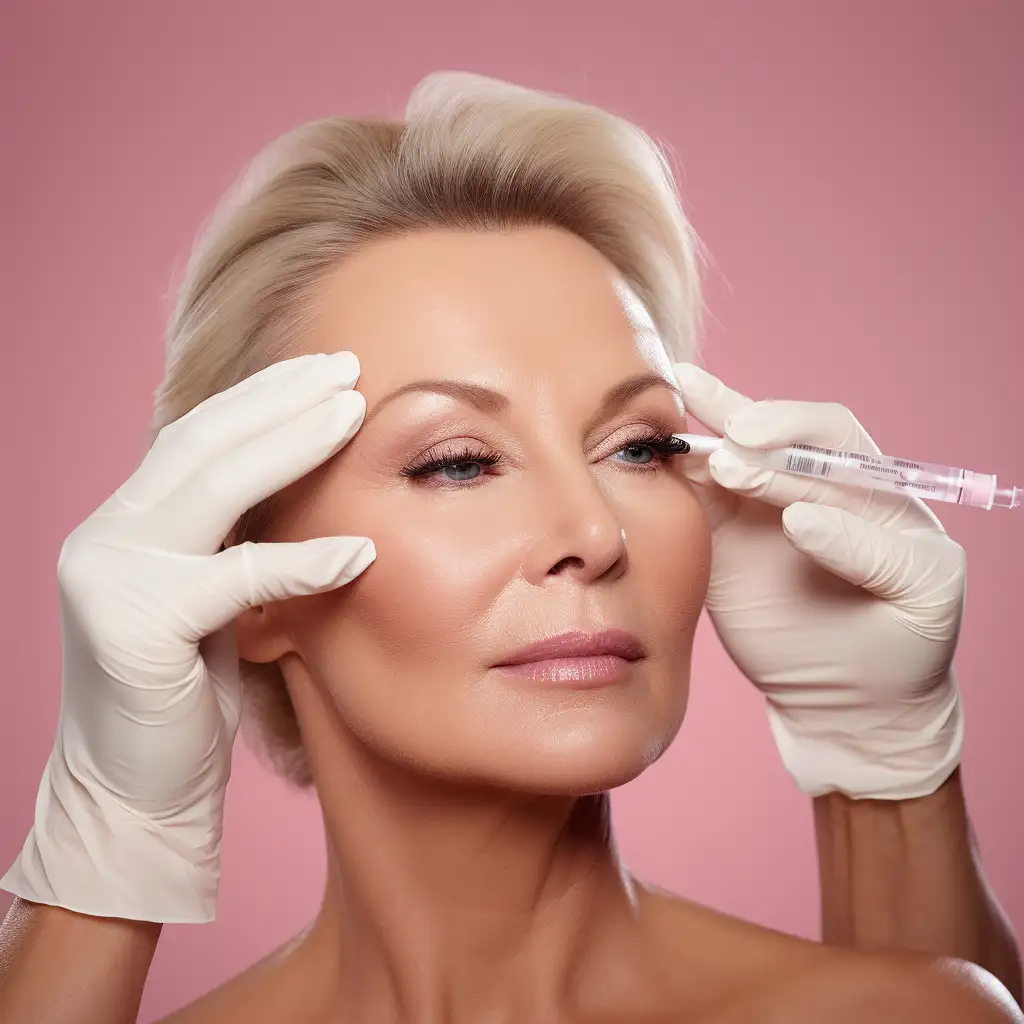Does Botox Work For Crow’s Feet?
 Botox is a reliable way to treat crow’s feet, diminishing the appearance of wrinkles and creating a younger-looking face. It has been proven safe and effective in reducing those aging signs for optimal results.
Botox is a reliable way to treat crow’s feet, diminishing the appearance of wrinkles and creating a younger-looking face. It has been proven safe and effective in reducing those aging signs for optimal results.
Crow’s feet are the small wrinkles that appear around the outer corners of your eyes as you age. They typically become more noticeable when smiling or squinting. Botox injections relax the underlying eye muscles to smooth crow’s feet for a more refreshed, youthful look. If you’re considering Botox for diminishing stubborn crow’s feet, follow this comprehensive guide for the treatment process.
Getting Rid of Crow’s Feet with Botox Injections
Getting rid of pesky crow’s feet with Botox may seem confusing if you’ve never had injections before. Not to worry – we’ll walk you through what to expect, from your initial consultation all the way through maintaining the results. This easy-to-follow guide outlines the treatment process in three parts: prepping for appointments, receiving Botox injections, and properly recovering afterwards. Follow these simple steps and expert tips to treat crow’s feet safely and effectively. In no time you’ll be crow’s feet-free, flaunting a refreshed, youthful eye area that looks better than ever.
Part 1 of 3 Preparing for Your Botox Treatment

- Book a consultation. Meet with an experienced, licensed dermatologist to discuss your options and determine if you’re a good candidate. Make sure to explain your treatment goals, discuss your medical history and ask questions about the procedure.
- Stop taking blood thinning medications. Avoid taking NSAIDs, aspirin, omega fatty acids, or vitamin E supplements for 1-2 weeks beforehand to minimize bruising risk.
- Apply ice before treatment. Wrap ice packs in a washcloth and apply to crow’s feet and under eye areas for 10-20 minutes pre-treatment to reduce inflammation.
- Come makeup-free. Do not wear creams, lotions or cosmetics on your under eye area the day of your appointment so the skin is easily accessible.
Expert Tip: Choose a board-certified dermatologist or facial plastic surgeon with several years of specialized Botox injection experience.
Part 2 of 3 Receiving Botox Injections

- Get the treatment area cleansed. The provider will sterilize the under eye skin with an antiseptic cleanser to prevent infection before injecting.
- Receive the injections. The expert will inject tiny amounts of Botox using an ultrafine needle into your orbicularis oculi muscles just under the skin’s surface near the outer corners of the eyes.
- Know it shouldn’t hurt. There may be minor pinching or stinging from the needle, but the procedure is not typically painful since Botox needles are very thin. Let your provider know if you experience pain or burning.
Expert Tip: Let your provider know if you have sensitivity, allergies, or reactions to cleansing agents.
Part 3 of 3 Recovering and Maintaining Results

- Ice after treatment. Apply covered ice packs intermittently to the treated areas for a few hours post-treatment to minimize swelling, redness and potential bruising.
- Avoid rubbing or massaging. Do not manipulate the treated muscles for at least 4 hours post-treatment by limiting head turning side to side, not touching the area, and avoiding exercise.
- See results within days. It takes 3-10 days to see Botox start relaxing the muscles and smoothing crow’s feet. Optimal results are visible at 10-14 days. Effects last around 3-4 months.
- Repeat treatments. Schedule repeat Botox injections every 3-4 months to maintain reduction in the appearance of crow’s feet over time. Consistency is key for the best results long-term!
Expert Tip: Continue icing for about 24 hours. Apply cool compress for 20 minutes on, 20 minutes off. Sleep upright and on your back for the first night to prevent the treated muscles from moving.
Understanding Crow’s Feet and Their Formation
As we age, frequent facial expressions, sun exposure, skin damage, hormonal changes, poor nutrition, and chronic health conditions can contribute to the development of crow’s feet wrinkles around the eyes. Being aware of these risk factors may lead some to consider cosmetic injections like Botox to smooth these fine lines.
The Science Behind Crow’s Feet
Crow’s feet result from a combination of internal and external factors. Age-related decreases in collagen, the vital protein that gives skin its flexibility, play a significant role in the formation of these wrinkles.
Some have turned to Botox, a brand name for botulinum toxin type A injections, as a way to smooth fine lines around the eyes. This neurotoxin works by temporarily blocking nerve signals to the muscles, causing them to relax. Over time, repeated Botox treatments can reduce skin wrinkling in some patients.
There are different commercial formulations of botulinum toxin, including prabotulinumtoxin A and onabotulinumtoxin A. Some research indicates injecting small amounts of these purified neurotoxins may temporarily smooth fine lines around the eyes in adults. As we get older, our bodies produce less collagen, one reason skin may lose elasticity over time. While some see Botox as a quick fix for aging changes, it does not address underlying causes. Lifestyle measures that protect our skin from excess sun exposure can help maintain collagen and healthy aging.
Facial Expressions and Muscle Movement
Frequently furrowing the brow, squinting, smiling, and staring at screens can gradually fold the delicate skin around our eyes over time. Repetitive facial expressions and visual focus imprints microscopic creases that accumulate into crow’s feet wrinkles.
Some choose Botox injections in an effort to smooth facial wrinkles that naturally develop from repetitive expressions over time. Botulinum toxin injections work by temporarily paralyzing underlying muscular contractions around the eyes that etch lines into the skin.
External Factors Affecting Skin Health
External factors significantly impact skin health, especially concerning the formation of crow’s feet and overall aging. Here are some critical factors elaborated upon:
- Sun Exposure: Crow’s feet are more likely to occur if you spend a lot of time in the sun, especially as the skin around our eyes is quite delicate. UV radiation harms collagen and elastin, which leads to lines and early aging.
- Facial Movements: Habitual facial expressions, like squinting due to bright light or consistent frowning, can accelerate the formation of crow’s feet. Repetitive muscle contractions in these areas contribute to the breakdown of skin elasticity.
- Lifestyle Habits: Smoking and an imbalanced diet are detrimental to skin health. Smoking cuts off blood flow to the skin, denying it oxygen and essential nutrients. A bad diet lacking in antioxidants and vital nutrients speeds up the skin’s aging process.
- Skincare Measures: Regular sunscreen use can help slow skin aging and wrinkle development from excessive UV exposure over time. Following recommendations on adequate sun protection factor (SPF) levels based on skin type and amount of sun exposure provides important safeguards. Further protecting our skin by wearing wide-brimmed hats, tightly-woven clothing, and UV-blocking sunglasses when out during peak sun hours are also wise considerations.
- Healthy Lifestyle Changes: Getting enough vitamins, minerals, and antioxidants in your food suits your face. Giving up smoking and drinking less booze is good for your skin, avoiding early aging and making crow’s feet less noticeable.
- Complementary Treatments: You can get Botox shots and change your lifestyle to control and lessen the look of crow’s feet. These treatments relax the muscles and smooth out the wrinkles. However, these should be complemented with a holistic approach to skincare for optimal results.
Understanding and addressing these external factors are pivotal in establishing effective skincare routines and maintaining youthful, healthy skin.
Botox Injections: A Closer Look at the Procedure
Some choose Botox injectables from licensed providers to smooth crow’s feet, though potential side effects do exist. Botulinum toxin type A is one formulation used to temporarily relax facial muscles around the eyes by blocking nerve signals. This paralysis softens overlying skin by preventing muscular contractions that etch lines over time.
Peak effects tend to appear around two weeks post-injection, fading after three to four months. As with any procedure, risks factors should be weighed carefully against possible cosmetic benefits.
Preparing for Your Botox Cosmetic Treatment
Some things you can do before your Botox surgery can have a big effect on the results and lower the risk of side effects:
- Dietary Adjustments: For 24 to 48 hours before to treatment, avoid taking supplements such as fish oil, ginkgo biloba, vitamin E, and garlic. In addition, for at least two days before to your injection, stay away from alcohol, caffeine, and meals heavy in sugar or salt.
- Skincare Regimen: Avoid wearing anything containing glycolic acid, retinoids, retinol, or retin-A in the days preceding your appointment. These goods could obstruct the course of therapy.
- Medication Awareness: Stopping blood thinners or similar medication 3-5 days before planned injections is typically recommended to avoid risks like increased bleeding or over-sedation.
If you follow these tips, your Botox experience will be smoother and more effective, leading to better results.
The Botox Treatment Experience
Even though getting Botox may make you anxious, knowing how it works could ease your concerns.
Botox injection processes typically use small needles and only take about 10 minutes to administer. However, experiences of discomfort or pain can vary greatly for each individual.
Tiny needles are used during the ten-minute treatment, which is quite painful. After the short appointment, patients can return to their normal activities.
Exploring new cosmetic procedures can surface many emotions. Feelings of anxiety are common when considering Botox injections. Gaining knowledge on what the process entails may help inform your decision and ease worries.
A standard Botox appointment starts with signing consent forms and discussing objectives with your provider. They will evaluate your facial muscles and skin to determine an injection plan. Typically small-gauge needles are used to inject very precise amounts of diluted botulinum toxin in specific areas, like crow’s feet near the eyes. Though the actual injections only take about 10 minutes, understanding your post-procedure self-care instructions is crucial.
The pain level associated with injections seems to vary greatly for each patient. Some compare it to being pricked by a thin needle, citing only mild discomfort. Others report deeper aching during the procedure that subsides shortly after. Tenderness, swelling, or bruising around injection sites can sometimes persist for a few days. It is important to follow your provider’s guidance on using cold compresses if necessary to alleviate inflammation.
While Botox takes hold in the treated facial muscles within the first 24 hours, visible smoothing of wrinkles builds gradually over 2 weeks as paralysis sets in. Patients can resume normal activities immediately after injections. However, strenuous exercise is not recommended for at least a day post-procedure.
Post-Treatment Care and Recovery
Taking care of oneself following Botox injections is essential for optimal outcomes and a quick recovery:
- Physical Rest: During the first 24 hours following therapy, take a vacation from strenuous activity. Additionally, do not get your face or head massaged during this period.
- Skincare: Following the surgery, use only mild skincare products. Refrain from using exfoliants and strong chemicals that might cause skin irritation.
- Swelling: To lessen any swelling where you received the injections, try using cold packs. Drinking plenty of water might also help reduce edema.
- Pain Relief: If you’re experiencing any discomfort, you can take painkillers as directed by your doctor.
- Stay Clean: Keep everything clean, but don’t use scented soaps near the areas that have been treated, especially when you wash your face.
- Follow-up Visits: Remember to schedule your follow-up visits on time. Regular Botox treatments help preserve that wrinkle-free, smooth appearance because the treatment typically lasts three to four months.
For best outcomes and a speedier recovery, keep these suggestions in mind following your treatment. It increases the effectiveness of the treatment and lessens the possibility of any side effects.
Comparing Botox with Other Facial Wrinkle Treatments
When considering crow’s feet and facial wrinkles treatments, weighing the options is crucial. Here’s a comparison between Botox injections and alternative treatments:
- Botox Injections: Considered highly effective for crow’s feet, Botox works by relaxing targeted muscles, reducing wrinkles’ appearance significantly.
- Dermal Fillers: Though dermal fillers may temporarily plump wrinkles, injecting too much product can sometimes overfill the delicate eye area. This risks uneven lumps or excessive swelling instead of smooth results. Each face has unique bone structure and fat distribution that skilled providers carefully assess. What one person perceives as rejuvenating fullness may seem puffy swelling to another.
- Laser Treatments: Laser skin resurfacing is sometimes used to reduce the appearance of fine lines and wrinkles, including crow’s feet around the eyes. These devices direct concentrated beams of light at the outer skin layers to remove damaged cells and stimulate collagen growth. Several sessions are typically required to see results. While lasers can improve skin texture, there are notable downsides to consider. Treatments often cost thousands of dollars with no guarantee on outcome longevity. The procedure can cause moderate pain, requiring numbing creams or injections.Topical Creams or Serums: Topical creams offer some improvement in targeting crow’s feet. However, their effects generally can’t match the results achieved with Botox injections.
Dermal Fillers vs. Botox: Which Is Right for You?
Botox and dermal fillers address wrinkles, although their methods differ. Botox relaxes facial muscles by decreasing acetylcholine production and reducing wrinkles.
Conversely, dermal fillers revitalize lost volume, filling fine lines and offering structural support for smoother skin. Combined, these treatments mitigate repetitive muscle movements causing wrinkles while enhancing facial volume.
The decision between these options hinges on individual needs and desired outcomes. Potential side effects, such as discomfort or bruising around the treated areas, should be considered when selecting the most suitable treatment.
Botox is a relatively unique crow’s feet treatment in that it accurately targets specific areas like the corners of the eyes.
On the other hand, dermal fillers work to smooth out lines and add volume to the skin. When used together, they might work better than alone, giving you a more complete way to deal with overused muscles and add volume to your face.
Laser Treatment and Its Effectiveness on Skin Texture
The appearance of crow’s feet around the eyes can also be smoothed out with laser treatments. Sun damage, wrinkles, and uneven coloring on the face can all be fixed with different types of lasers, such as CO2, fractional, and IPL.
These methods may deliver desired results, but the area they’re used on might turn red, itchy, or swollen for a short time. Before using a laser, certain steps should be taken to ensure the best care and safety.
When you combine Botox with laser treatment, the effects on smoothing out skin structure and lines are even better. When laser treatment is combined with Botox shots, the skin’s texture gets better, lines get less noticeable, and the skin tone gets more even.
Botox, which relaxes the muscles in the face, works better when used with laser treatments to get rid of lines. It might seem like a good idea to get laser treatments to fix the skin around your eyes, but it’s important to know that results can be different.
Whatever the case, these treatments make the face look and feel a lot better when they are combined with Botox. Before you agree to a treatment plan, you should talk to a professional to make sure it is safe and fits your needs.
The Role of Topical Creams and Serums
Topical creams and serums may help diminish the visibility of crow’s feet. These products contain retinoids, peptides, hyaluronic acid, vitamin C, and caffeine, all speeding up the skin’s cycle, helping make collagen, hydrating cells, and making the skin look fuller.
While these topicals cannot be expected to achieve results comparable to Botox injections, they can still benefit your skincare regimen.
Maximizing the Benefits of Botox for Crow’s Feet
After discussing the numerous approaches for treating crow’s feet, let’s next examine how to maximize the benefits of Botox.
Frequency of Botox Treatments
For Botox to work well on wrinkles and crow’s feet, people usually get injections every three to four months. But after about two years, some might find they can wait longer between injections without losing the desired benefits. This change doesn’t mean the treatment stops working, and it might not need to happen as often.
Many things can affect how often someone needs Botox injections – things like how old they are and what kind of skin they have to make a big difference. People with stricter skin might need injections less often than others.
Deciding when to get Botox again is something to discuss with your dermatologist. They can offer advice depending on your preferences and skin type. They consider factors such as the range of motion in your muscles, the elasticity of your skin, and your desired outcome from therapy.
Lifestyle Adjustments for Prolonged Results
To extend the longevity of Botox results, specific lifestyle changes need to be implemented to treatment frequency.
Good sleep hygiene as well as stress management should be incorporated into daily life while staying away from direct sun exposure with sunscreen use being mandatory when outdoors.
Taking measures like these can keep collagen levels intact, which may result in prolonged effects achieved through using Botox on crow’s feet wrinkles or other facial areas requiring such care.
It is also recommended not smoking nor consuming alcohol excessively because both have been linked with decreased efficacy when it comes to this kind of cosmetic procedure’s outcome over time.
A comprehensive anti-aging approach may offer the most sustainable results over time. Thoughtfully combining professional treatments with daily skincare and facial exercises could better address wrinkles. Active skincare ingredients tailored to individual needs help nourish skin health. Targeted facial movements strengthen underlying muscles to potentially reduce folds.
Combining Botox with Aesthetic Treatments
Combining Botox with other aesthetic procedures may help minimize wrinkles and improve the appearance of your skin. These two sets complement each other well:
- Dermal Fillers: Hyaluronic acid fillers and Botox can be combined to assist in lessening the appearance of fine lines and wrinkles brought on by movable facial muscles. These fillers fill up spaces left by lines, making them less apparent when used with Botox.
- Laser Resurfacing: Among other things, wrinkles, black spots, and UV damage can all be eliminated with laser treatments. Combining this technique with Botox has even more advantages and an improved appearance.
- Microdermabrasion: Studies have demonstrated that microdermabrasion can improve the efficacy of botulinum toxin treatments. However, combining medications might be risky, so you should see your physician before doing so.
The Last Word
Some believe Botox injections are the most effective way to smooth crow’s feet wrinkles and rejuvenate skin. Understanding the process and setting realistic expectations may help maximize potential results.
Since each person’s facial anatomy is unique, the ideal treatment approach can vary. Skilled cosmetic providers can formulate customized Botox treatments targeting individual trouble spots. With a series of injections, some patients see a long-term reduction in fine lines around the eyes.
Q & A The Ultimate Guide to Botox Crows Feet Treatment
The content of this article is not intended to be a substitute for professional medical advice, examination, diagnosis, or treatment. You should always contact your doctor or other qualified healthcare professional before starting, changing, or stopping any kind of health treatment.
How long does Botox last crow’s feet?
Crow’s feet, those muscles around the eyes, are used much more than other parts of the face. That’s why when Botox can be particularly effective, as it usually lasts about four months before needing another treatment. Botox wears off faster in these muscles than in other parts of the face because they are always moving. For this reason, most people get touch-ups every four months.
Are crow’s feet still there after Botox?
Crow’s feet may persist after Botox. Because the skin and muscles around the region contract, wrinkles may form.
How much botox for forehead?
Usually, a forehead Botox procedure uses about 20 units of injections, but it might go up to 30 units if necessary. The typical amount for this treatment is around 20 units. But if the lines or wrinkles are more noticeable or the treatment area is bigger, the doctor may suggest a higher dose of up to 30 units to get the best results.
What causes crow’s feet?
Aging, tight face muscles, sun exposure, and lifestyle choices can cause crow’s feet. These elements often lead to the appearance of delicate lines around the eyes.



